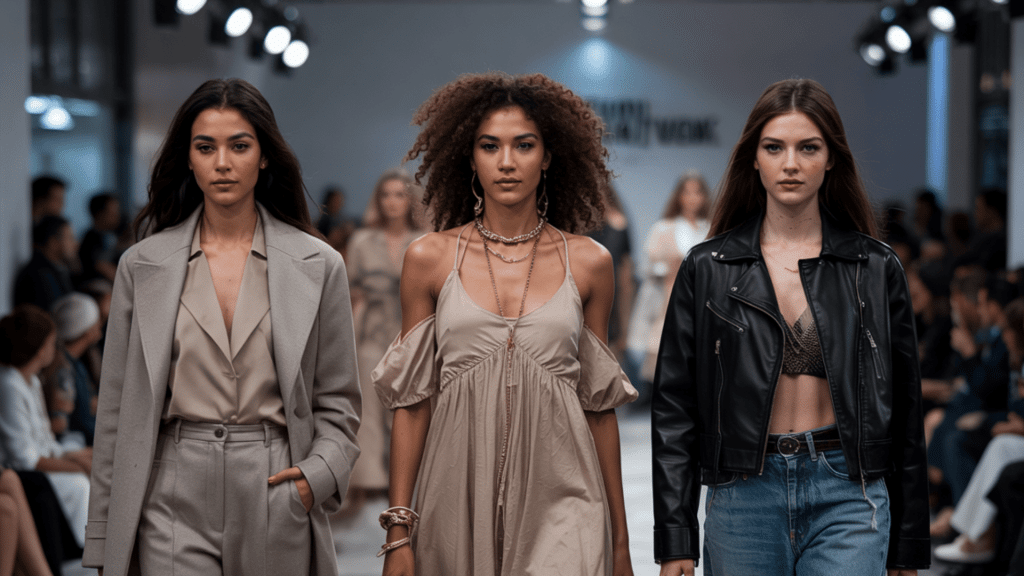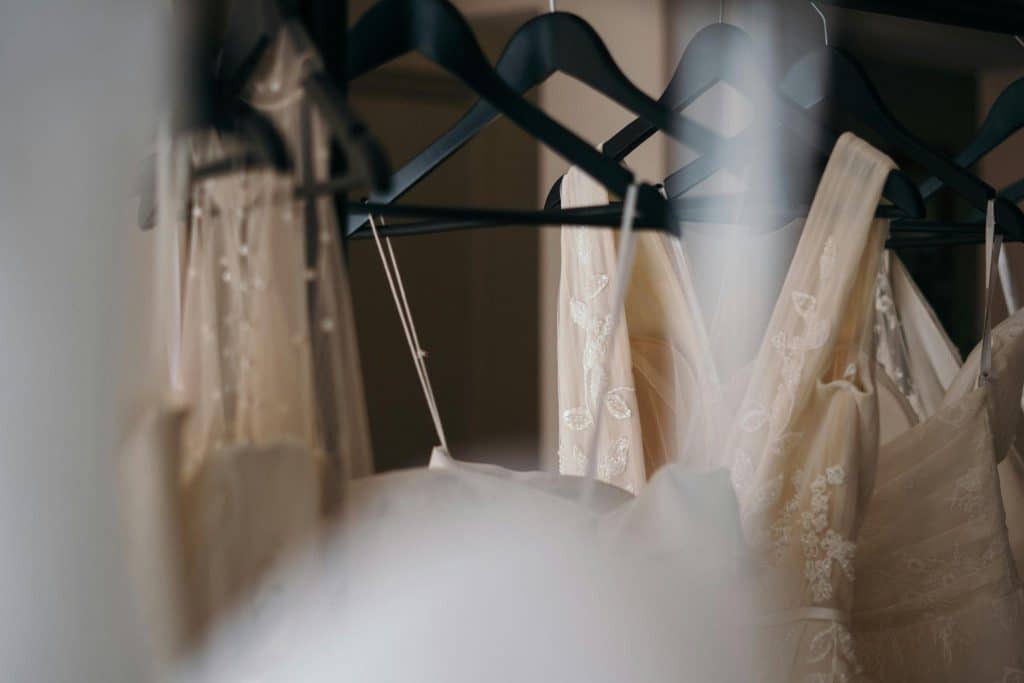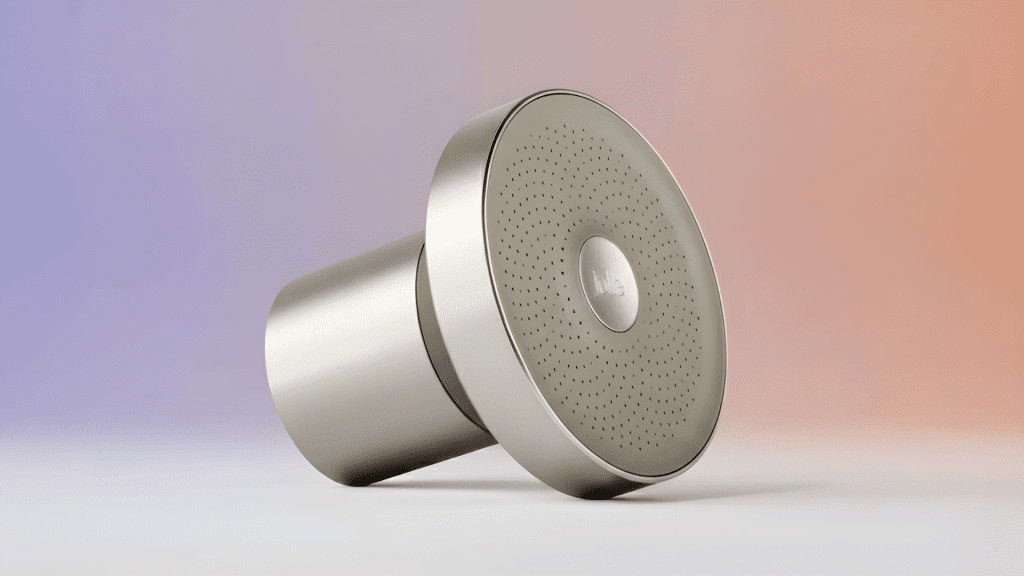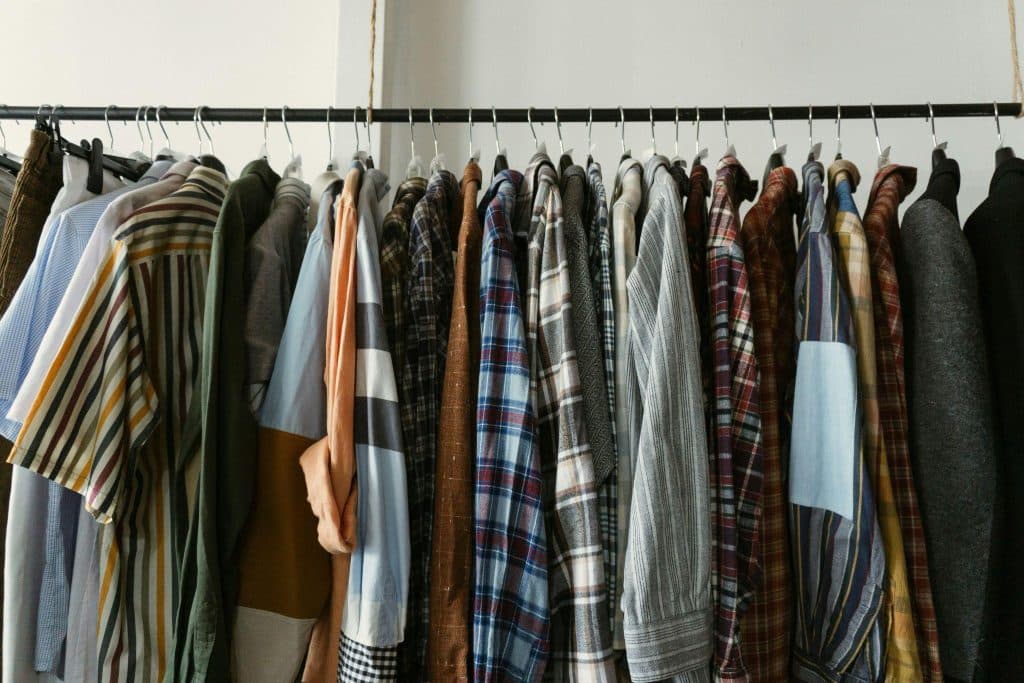Understanding different fashion styles helps you refine your personal wardrobe and express yourself with confidence.
When building a new closet or just wanting to try something fresh, knowing your options opens up endless possibilities for creative outfits.
Fashion styles range from casual everyday looks to high-end couture pieces. Each style has its own personality, key pieces, and occasions where it works best.
Learning about different styles helps you identify what feels authentic to you.
This guide covers distinct clothing styles from around the world. You’ll learn the key characteristics of each style, see examples of signature pieces, and get inspiration for incorporating new looks into your wardrobe.
What Is a Clothing Style? What Is a Fashion Style?
Clothing style refers to the typical garments, fabrics, and silhouettes a person chooses to wear. It includes the specific pieces you put together, like jeans with a sweater or a dress with heels.
Your clothing choices create the foundation of your overall look.
Fashion style is broader and encompasses your complete visual identity. It includes the mood, attitude, and personality you express through your clothing choices.
Fashion style combines your clothing pieces with accessories, colors, and styling decisions.
Understanding this difference helps you build a wardrobe that works. You can mix different clothing pieces while maintaining a consistent fashion style that feels true to your personality.
1. Casual Style
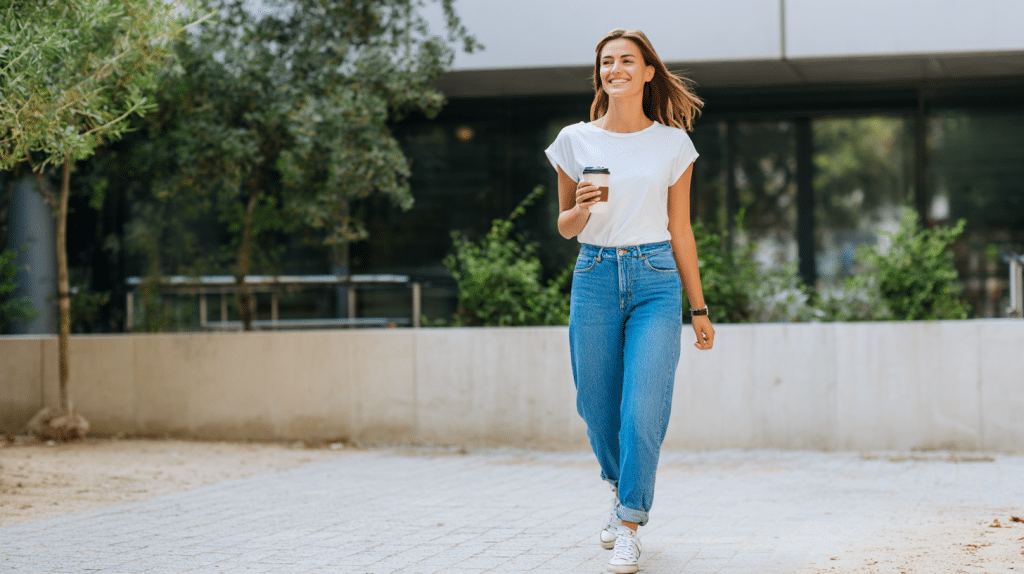
Casual style focuses on comfort and ease for everyday activities. The pieces are relaxed, practical, and perfect for running errands, meeting friends, or lounging at home.
Key pieces include jeans, t-shirts, sneakers, and hoodies. Casual style often features soft fabrics, comfortable fits, and simple colors.
The goal is to look put-together without trying too hard.
2. Formal/Business Style
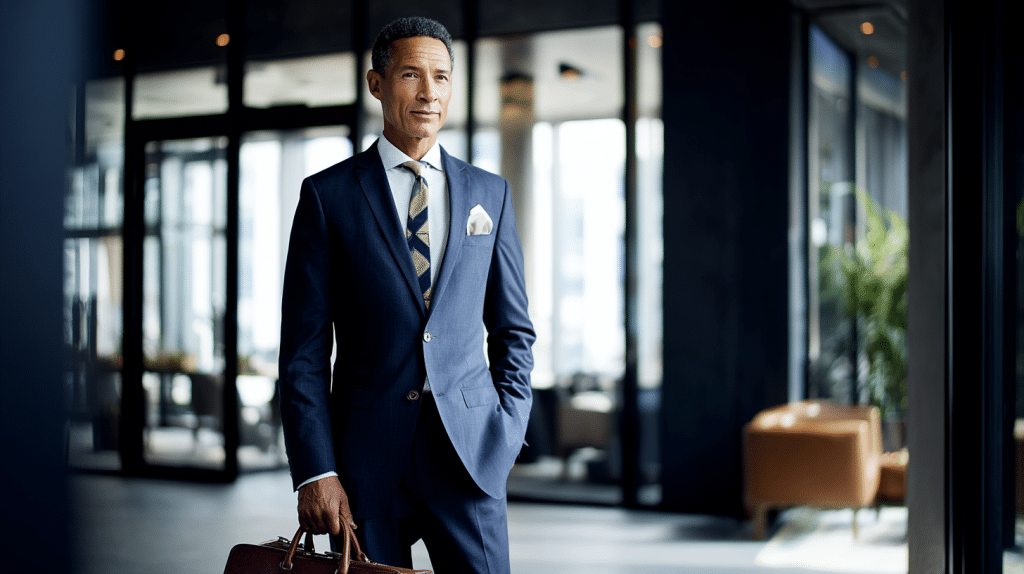
Formal style creates a professional, polished appearance for work and important events. The clothing is structured, well-fitted, and follows traditional business dress codes.
Essential items include suits, pencil skirts, dress shirts, and ties. The color palette tends to be neutral with navy, black, gray, and white as staples.
Quality fabrics and proper tailoring are important for this style.
3. Business Casual
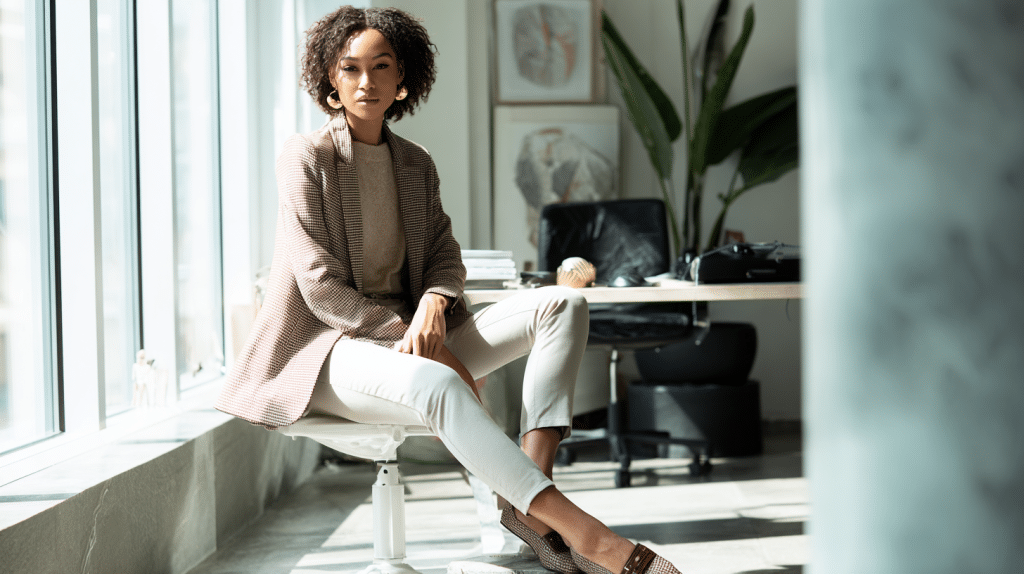
Business casual mixes formal and relaxed elements for a professional yet approachable look. It’s less rigid than formal business wear but still maintains a polished appearance.
Common pieces include blazers with chinos, skirts with knit tops, and dress pants with button-down shirts.
The style allows more color and texture than formal wear while staying work-appropriate.
4. Chic/Minimalist
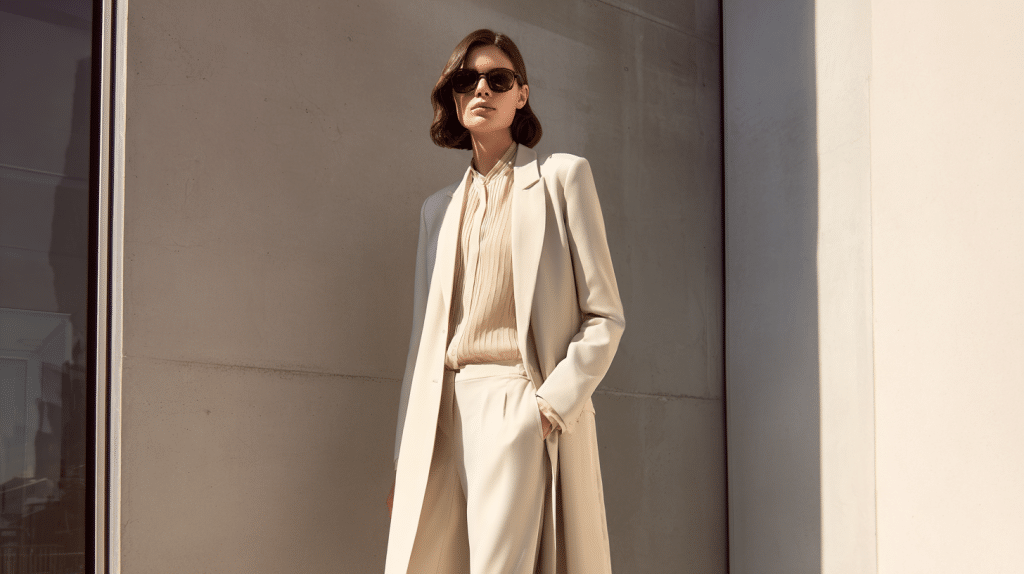
Chic style emphasizes clean lines, neutral colors, and high-quality basics. The focus is on fewer, better pieces that work together seamlessly.
Key elements include tailored pants, silk blouses, and well-fitted coats. The color palette stays neutral with black, white, beige, and navy as foundations.
Quality over quantity is the main principle.
5. Bohemian (Boho)
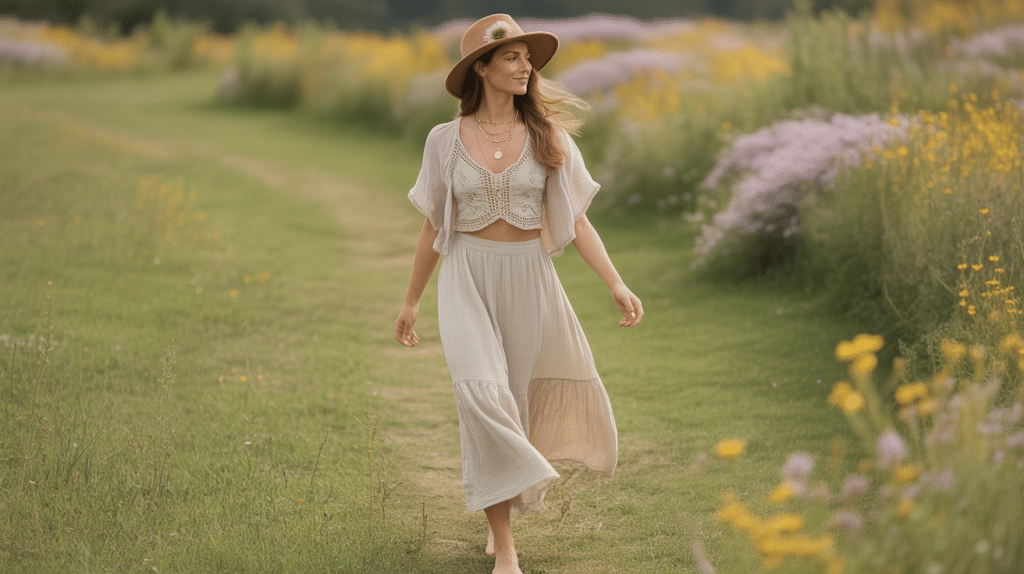
Bohemian style embraces a free-spirited, artistic look with flowing fabrics and earthy elements. The look draws inspiration from various cultures and emphasizes comfort and self-expression.
Signature pieces include maxi skirts, fringe vests, and layered jewelry. Natural fabrics like cotton, linen, and hemp are preferred.
Layering and texture play important roles in this style. The color palette often features earth tones, warm oranges, and deep purples.
6. Streetwear

Streetwear combines urban culture with sporty elements to create a relaxed yet trendy look. The style originated in skate and hip-hop communities and has become mainstream fashion.
Essential items include oversized hoodies, joggers, and branded sneakers.
Graphic prints, bold logos, and athletic-inspired pieces define this style. The fit tends to be loose and comfortable.
7. Sporty/Activewear (Athleisure)
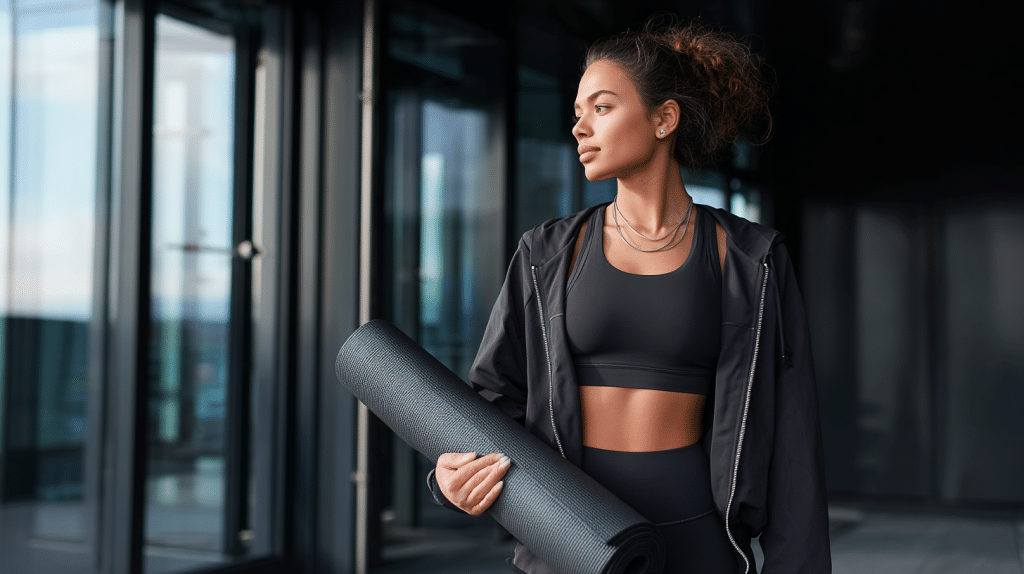
Athleisure takes athletic clothing beyond the gym for everyday wear. The style combines performance fabrics with fashionable cuts to create adaptable pieces.
Key pieces include leggings, track jackets, and running shoes. Technical fabrics that wick moisture and stretch comfortably are preferred.
This trend reflects modern lifestyles that blend fitness with daily activities. This works for both workouts and casual social activities.
8. Vintage Style
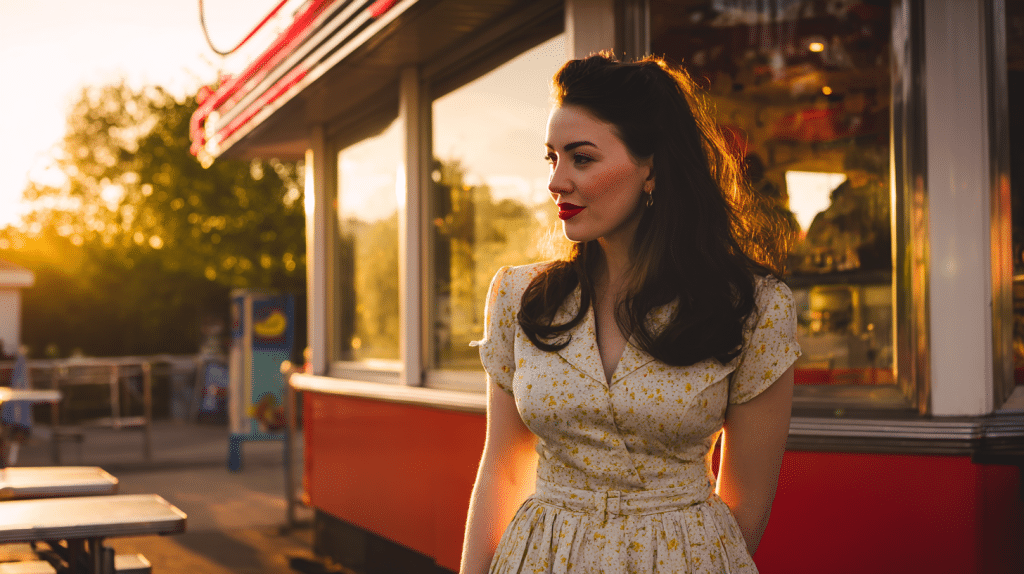
Vintage style uses authentic clothing pieces from past decades. The look recreates specific time periods with original garments or deadstock items.
Examples include 1950s swing dresses, 1960s mod shifts, and 1970s wide-leg pants. Vintage enthusiasts often shop at thrift stores, estate sales, and specialty vintage retailers.
This style requires knowledge of historical fashion and attention to period-accurate details.
9. Retro Style
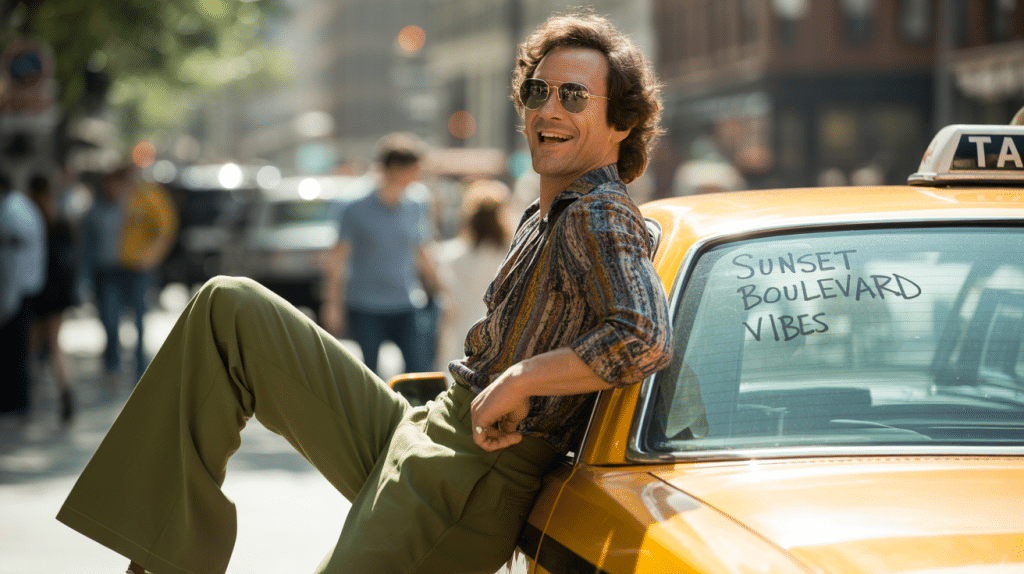
Retro style takes inspiration from past decades but uses modern reproductions and reinterpretations. Unlike vintage, retro pieces are newly made with old-fashioned designs.
Popular retro elements include 1970s-inspired flared pants and 1990s slip dresses. The style borrows the best elements from past decades while updating them for modern life.
Retro fashion often cycles through different decades as trends change.
10. Romantic Style

Romantic style emphasizes soft, feminine details and elegant touches. The look focuses on beauty, grace, and traditional femininity.
Signature pieces include lace tops, floral dresses, and puff sleeves. Soft colors like blush pink, cream, and lavender are popular.
Delicate fabrics, flowing silhouettes, and pretty details define this approach to fashion. The style often incorporates ruffles, bows, and other decorative elements.
11. Androgynous/Unisex
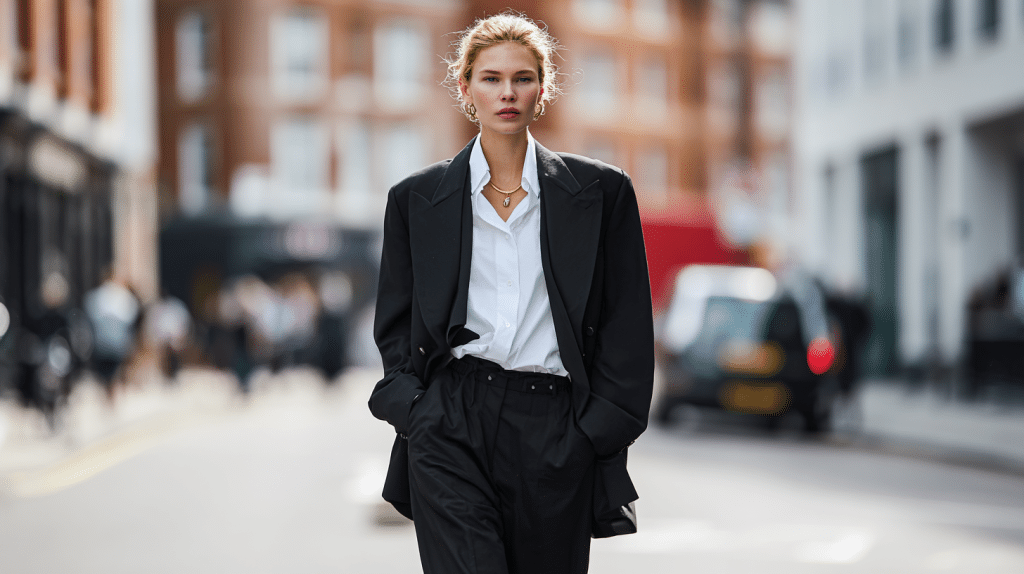
Androgynous style balances masculine and feminine design elements to create a gender-neutral style. The look challenges traditional gender norms in fashion and emphasizes individual expression over conventional expectations.
Key pieces include oversized blazers, tailored trousers, and button-down shirts. The style often features structured silhouettes and neutral colors.
Both men and women can wear these pieces with equal comfort and style.
12. Edgy/Punk
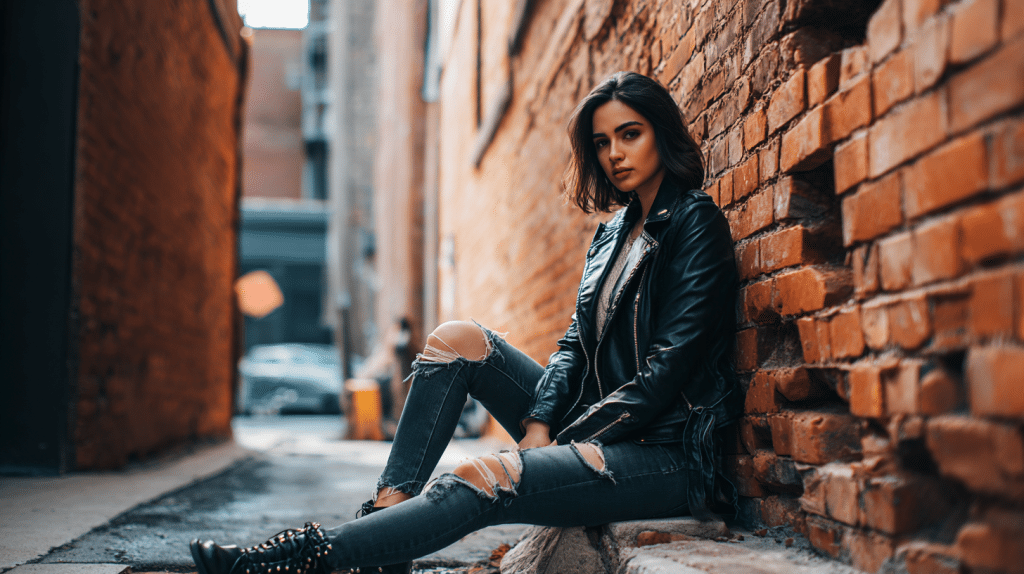
Edgy style embraces bold, rebellious elements with a rock music influence. The look communicates confidence, individuality, and a willingness to stand out from mainstream fashion.
Essential items include leather jackets, ripped jeans, and studded accessories. Black dominates the color palette, with occasional pops of bright color.
Dark colors and tough materials are the most common features.
13. Gothic
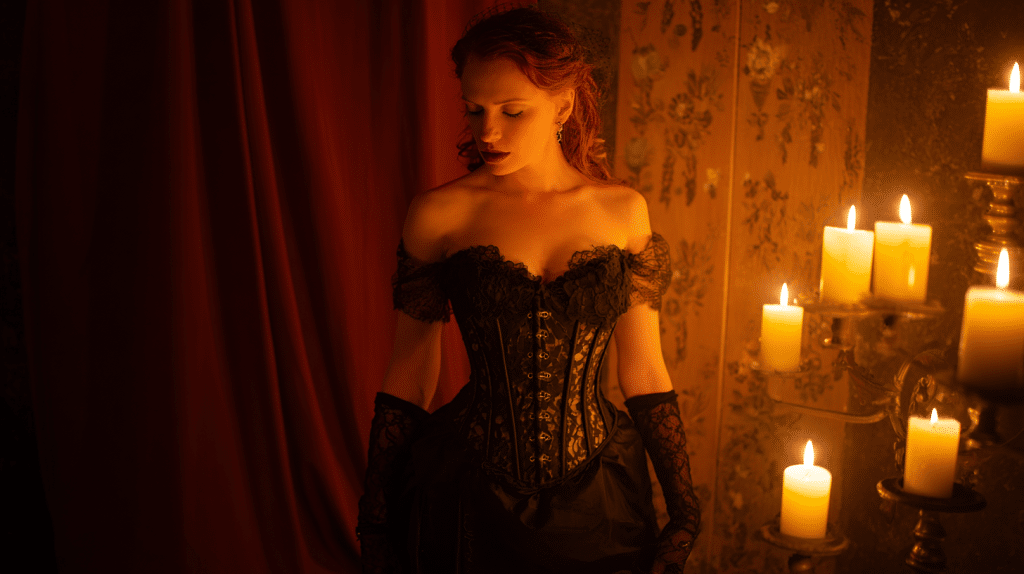
Gothic style creates a dark, dramatic look that draws from Victorian and modern punk influences. The look embraces mystery, elegance, and theatrical elements.
Signature pieces include black lace dresses, corsets, and heavy boots. The color palette is predominantly black with occasional deep reds or purples.
Rich textures and ornate details are important components. Gothic style often incorporates velvet, lace, and metallic accents.
14. Preppy

Preppy style reflects collegiate and country club traditions with heritage-inspired pieces. The look emphasizes classic American sportswear and Ivy League fashion.
Essential items include polo shirts, pleated skirts, and penny loafers. The color palette features navy, khaki, white, and pastels.
Quality materials and classic designs are key characteristics. Preppy style often incorporates patterns like stripes, plaids, and argyle.
15. Cultural/Ethnic

Cultural style incorporates traditional attire tied to specific heritage or cultural celebrations. These pieces often have deep historical significance and special construction techniques.
Examples include Japanese kimonos, Indian saris, Korean hanboks, and African dashikis. These garments often feature intricate patterns, rich colors, and symbolic meanings.
The style celebrates cultural identity and preserves traditional craftsmanship. They’re worn for special occasions or as everyday cultural expression.
16. Couture/High Fashion

Couture represents the highest level of fashion craftsmanship with one-of-a-kind luxury designs. These pieces are often seen on runways and red carpets.
Examples include custom evening gowns and avant-garde statement pieces. Couture involves hand-sewing, custom fitting, and hours of detailed work.
It represents fashion as art rather than everyday clothing.
17. Resort/Travel Style
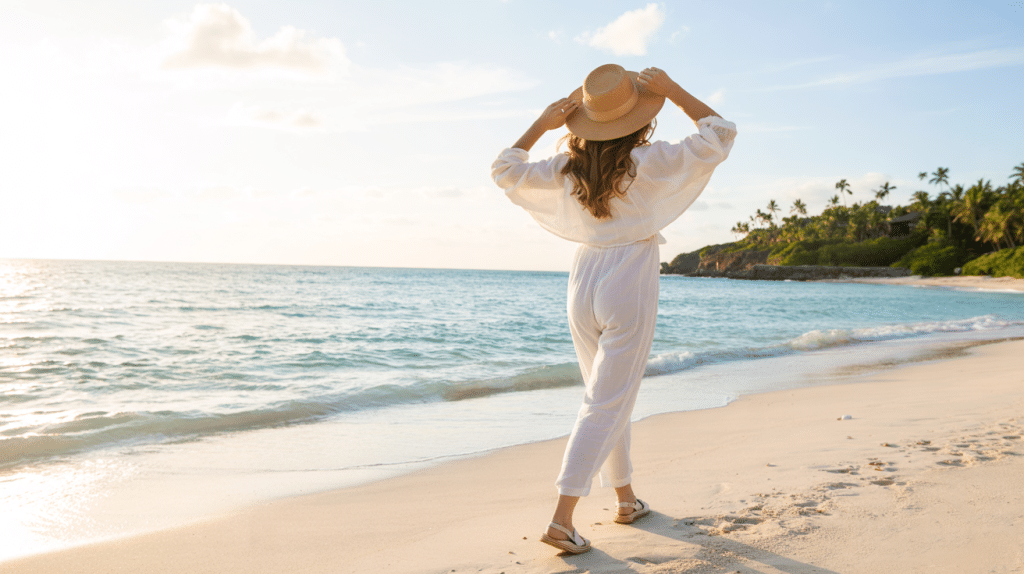
Resort style creates relaxed but polished looks perfect for vacation and warm weather. The style balances comfort with sophistication for travel and leisure activities. Breathable fabrics and flexible pieces are essential.
Key items include linen pants, maxi kaftans, and espadrilles.
The style emphasizes lightweight fabrics and easy-care materials. Colors tend to be bright and cheerful, reflecting vacation moods.
18. Loungewear
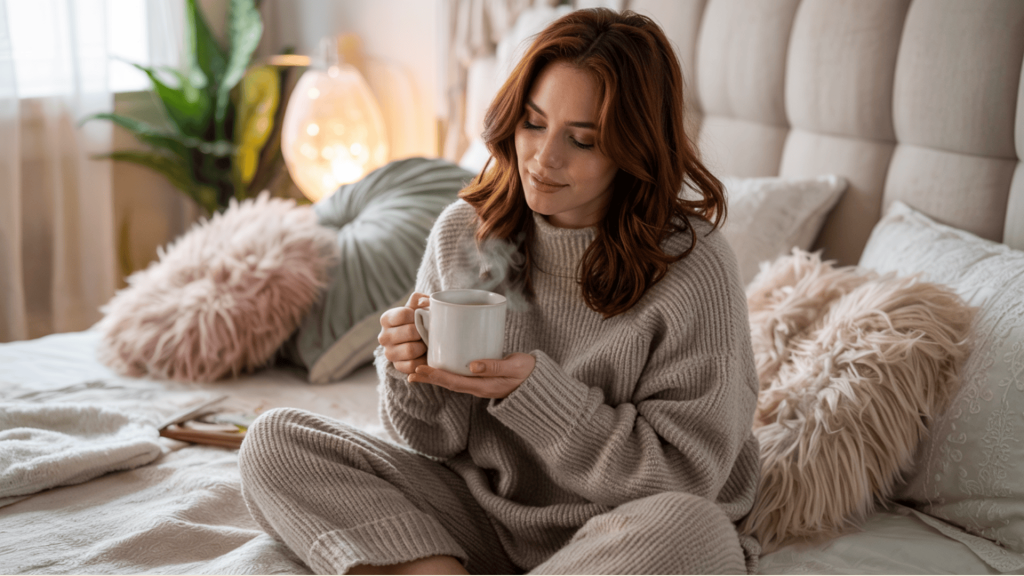
Loungewear focuses on maximum comfort for home activities and relaxation. The style has evolved from basic pajamas to fashionable pieces you can wear for video calls or quick errands. Soft fabrics and relaxed fits are priorities.
Popular pieces include jogger sets, knit robes, and oversized sweaters.
Loungewear bridges the gap between sleepwear and casual clothing.
19. Grunge
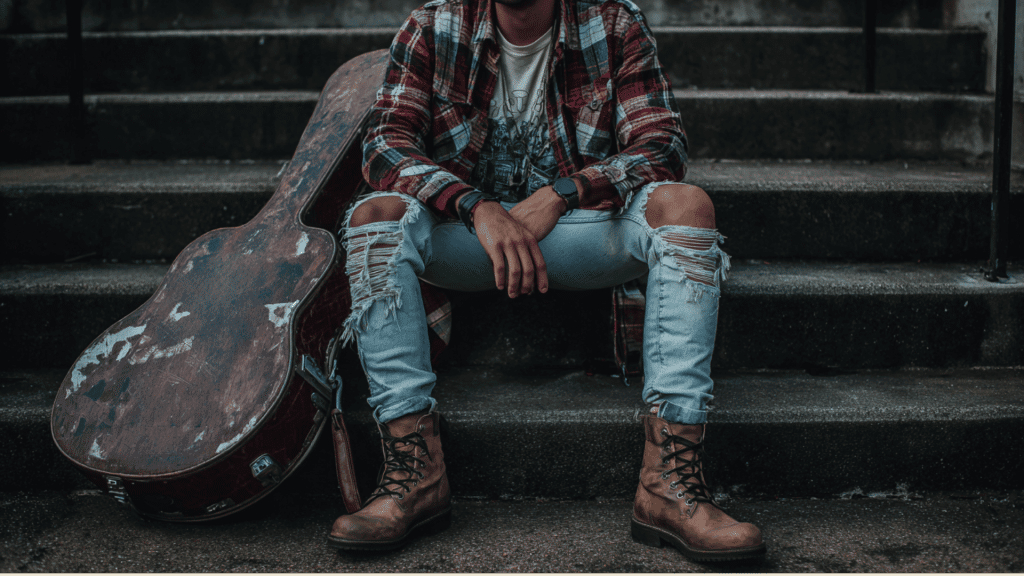
Grunge style emerged from 1990s alternative music culture with a deliberately worn-in, layered appeal. The artist rejects polished fashion in favor of authentic, rebellious looks.
Signature items include flannel shirts, combat boots, and distressed denim. The style emphasizes layering, mixed textures, and an effortless appearance.
Grunge celebrates imperfection and anti-fashion attitudes. Thrift store finds and vintage pieces are common elements.
20. Festival Style
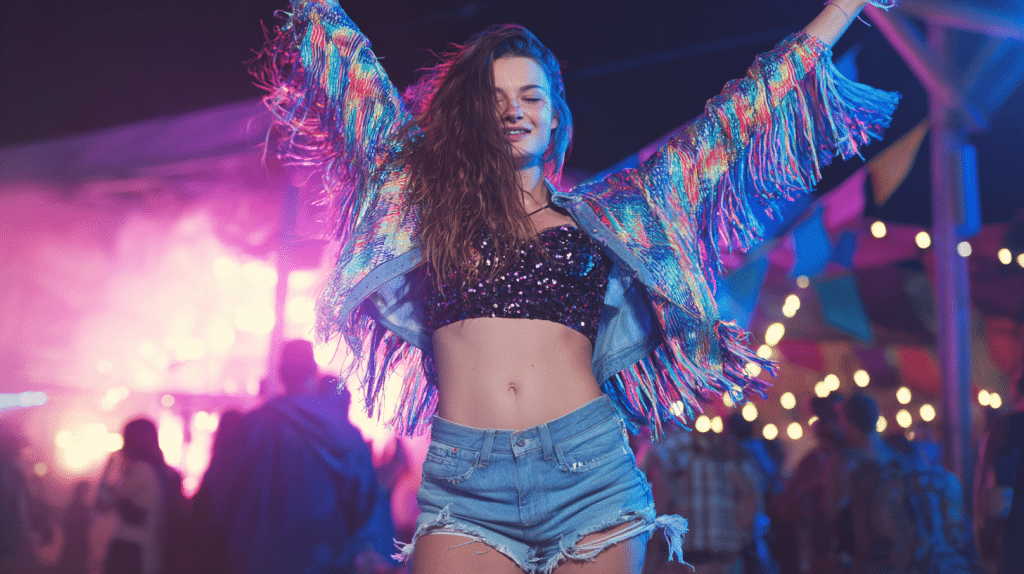
Festival style creates playful, colorful looks perfect for music festivals and outdoor events. The look emphasizes fun, creativity, and standing out in a crowd.
Comfortable shoes and weather-appropriate pieces are practical considerations. Popular items include fringe tops, sequined bodysuits, and boho accessories.
The style often incorporates bright colors, metallics, and statement pieces.
How to Find & Mix Your Styles
Finding your personal style starts with identifying your daily needs and lifestyle requirements. Consider your work environment, social activities, and comfort preferences.
Look through your current wardrobe and identify pieces you reach for most often. Notice which outfits make you feel your best and try to identify common elements.
Pay attention to compliments you receive on specific looks.
You don’t have to stick to just one fashion style. Many people successfully combine elements from different styles to create their unique look.
Start by choosing one main style and adding small elements from others.
Use accessories to experiment with new trends without completely changing your wardrobe. A punk-inspired jacket can add edge to a romantic dress, or preppy accessories can polish up a casual outfit.
Quick Reference Style Guide
| Style | Key Pieces | Best For | Color Palette |
|---|---|---|---|
| Casual | Jeans, t-shirts, sneakers | Everyday comfort | Any colors |
| Formal | Suits, dress shirts, ties | Business, events | Navy, black, gray |
| Boho | Maxi skirts, fringe, layers | Creative expression | Earth tones, warm colors |
| Streetwear | Hoodies, joggers, sneakers | Urban lifestyle | Bold colors, graphics |
| Vintage | Authentic period pieces | Historical appreciation | Period-appropriate |
| Minimalist | Quality basics, clean lines | Simplified wardrobe | Neutrals, black, white |
| Preppy | Polos, pleated skirts, loafers | Classic American style | Navy, khaki, pastels |
| Gothic | Black lace, corsets, boots | Dramatic expression | Black, deep reds |
Note: This table covers 8 of the 20 styles – mix and match elements from any style to create your personal fashion identity.
Seasonal & Functional Clothing Styles
Fashion styles need to adapt to different seasons and specific activities in your life. Understanding how to modify your preferred style for weather and function keeps you comfortable year-round.
Seasonal Adaptations
Summer calls for lighter fabrics, shorter sleeves, and breathable materials like cotton and linen. Winter requires layering, heavier fabrics, and protective outerwear like coats and boots.
Spring and fall allow for transitional pieces that work in changing temperatures.
Each fashion style can be adapted for different seasons. Boho style might feature flowing maxi dresses in summer and layered sweaters with boots in winter.
Minimalist style stays consistent but swaps lightweight blazers for wool coats.
Functional Categories
Different activities require specific clothing choices regardless of your preferred style. Activewear for fitness needs moisture-wicking fabrics and flexible fits.
Loungewear for home prioritizes comfort and soft materials.
Work environments may require business or business casual styling during the week. Weekend activities might call for casual or sporty pieces.
Special events could need formal or romantic styling depending on the occasion.
Practical Tips for Trying Fashion Styles
Building a stylish wardrobe doesn’t happen overnight, and you don’t need to buy everything at once. These practical approaches help you develop your personal style without breaking the budget.
- Add statement pieces gradually: Start with basics, then slowly add unique items as you identify what appeals to you.
- Easy style testing: Scarves, jewelry, bags, and shoes can completely change an outfit’s mood without major purchases.
- Mix style elements: Use accessories to add preppy, edgy, or romantic touches to your basic pieces.
- Multi-purpose pieces: Focus on items that fit your preferred style and work for multiple occasions.
- Invest in frequently worn items: Spend more on pieces like coats and shoes that you’ll use often.
- Shop your closet first: Check what you already have before buying new items to avoid duplicate purchases.
Conclusion
Learning about these clothing styles opens up endless possibilities for your wardrobe and self-expression.
Fashion is a personal path, and understanding different styles helps you make choices that feel authentic and confident.
You don’t need to fit perfectly into any single category. The best personal style often combines elements from multiple fashion types to create something uniquely yours.
Remember that fashion should make you feel good about yourself.
What’s your current fashion style, or which of these styles interests you most? Share your style preferences and questions in the comments below to help others on their own fashion path.

